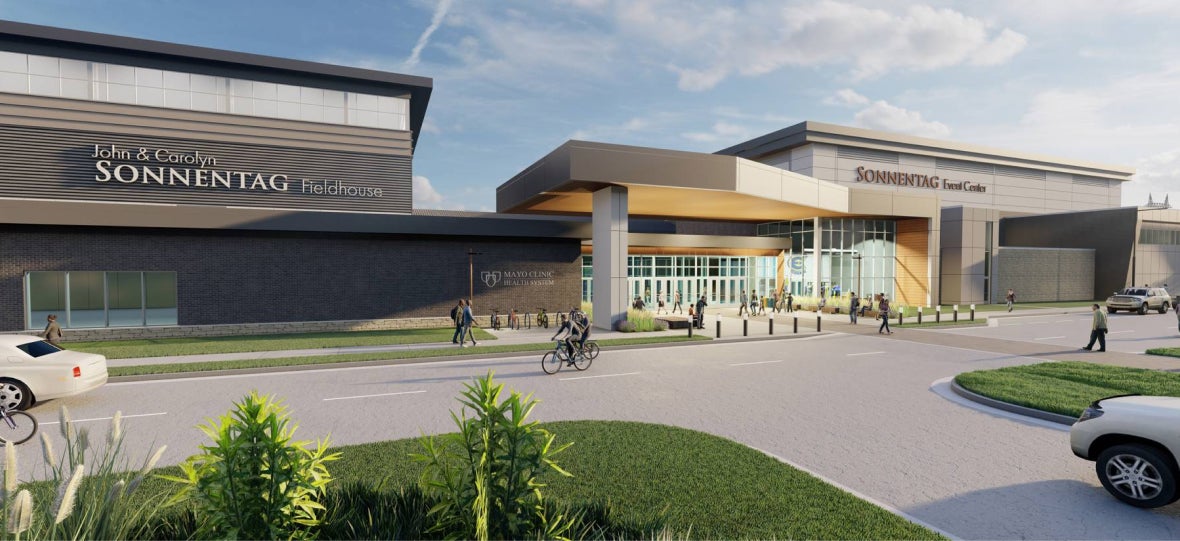Sustainability
Pablo Foundation, the University of Wisconsin-Eau Claire and its students, the city of Eau Claire and Xcel Energy are investing more than $12 million to reduce the carbon footprint in the Sonnentag Event Center and John and Carolyn Sonnentag Fieldhouse.
The announcement Thursday of the sustainability features in the facility to be built on the redeveloped brownfield site showcases the power of collaboration that is at the core of UW-Eau Claire’s 106-year-old legacy, says Chancellor James Schmidt.

The Sonnentag sustainability highlights:
- Redevelopment of brownfield site.
- Removal of 80% of total suspended solids from storm water runoff.
- Green vehicle parking.
- (10) Electric vehicle charging stations (plan for more in future).
- Bicycle and pedestrian friendly site and facility.
- Heavy use of native plantings and non-irrigated landscape.
- Greater than 30% indoor water use reduction.
- Greater than 50% outdoor water use reduction.
- Greater than 75% diversion of construction waste from landfill anticipated.
- Enhanced sustainability goals of net-zero energy and net-zero carbon.
- Mechanical building system to include two hundred (200) vertical geothermal wells that utilize naturally occurring ground source heat, rather than producing heat through the combustion of fossil fuels, to heat and cool the building.
- Building will be fully electric and will not consume fossil fuels, thereby significantly reducing overall operational carbon emissions and dramatically increasing carbon offsets.
- LED lighting used throughout the facility.
- Building automation system that provides high level of electrical and mechanical building system control.
- Improved building envelope performance achieved with greater insulation, energy efficient wall systems, and high-performance window and door systems.
- Partnership program with Xcel Energy to provide 100% of facility’s power requirements from a local, offsite solar PV plant.
- Enhanced commissioning, building envelope commissioning and life cycle assessment aimed at improving building performance and understanding environmental impact.
- Monitoring based commissioning and metering of building systems to track performance, adjust, and improve over time.
- Pursuing LEED certification.
- Pursuing WELL Health Safety Rating focused on operational policies, maintenance protocols, and emergency plans to improve the health and well-being of facility occupants.
